A few weeks ago, I spent the weekend travelling around Liverpool to visit the homes of The Beatles. What started off as a journey to see the new plague at George’s childhood home, my family and I took a voyage around the rest of the guys’ homes. It was really spectacular just to see all the houses in the modern day, and that years and years ago were four young boys who had a dream. Although these houses may seem very ordinary, they are landmarks in the music history of The Fab Four. Each house holds memories, stories, and unique experiences in the shaping of the band’s lives.
Let’s start off with George’s house! It was about 11 in the morning when we got here, a few days after the plague was put at his house. It was surprisingly quiet with only a few people gathered around taking photos below George’s house. Whether you take the Magical Mystery Tour Bus (details of purchase in the comments below) or just your own car (which we did), it is a little bit difficult to get to the house, driving through side streets and taking sharp turns.
The house looks so regular; the little windows and the white door, just everything felt really familiar, but so comforting. The house is reflective of the working-class environment that Harrison grew up in, mirroring the conditions of a family like his in this period. There were a few playing spaces on the other side streets, which made me think of little George Harrison, perhaps playing some football or running around with his mates. To me, it made me really emotional to see George’s house, and how the plague is positioned in honour of his life and legacy.
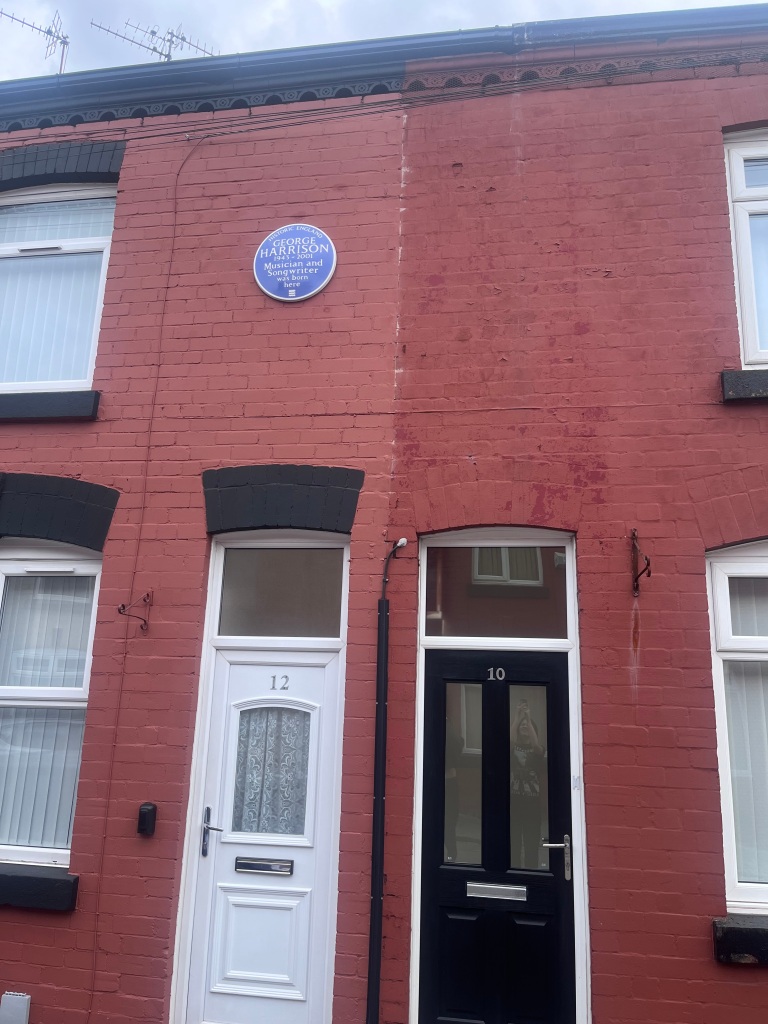
The next destination was Paul’s house, since we knew that George and Paul hadn’t lived too far from each other. I’m not exactly sure as to the distance between them, but it was around a 5-10 minute drive. Nobody was at Paul’s house when we got there, probably because it started to rain, but we were later met with the tourists on the Magical Mystery Tour Bus (…they seriously can’t be missed!). The house of Paul McCartney is supported by the National Trust, so if you’re a member of the National Trust, you can visit the inside of the house and navigate your way through the interior and access the modest living room where musical history was functionally made. Unfortunately for us, we weren’t able to go inside (if you purchase the Magical Mystery Tour, you have immediate access to these features).
For me, Paul’s childhood home was really small, especially if it was homed by Jim, Mary, and Mike too. It was really lovely to see the famous house from the human eye! The home of the McCartney’s is often referred to by fans and historians as “the birthplace of The Beatles” because it was a location where John and Paul had written many songs together. I Saw Her Standing There is one of the most popular songs which was written at the McCartney home.
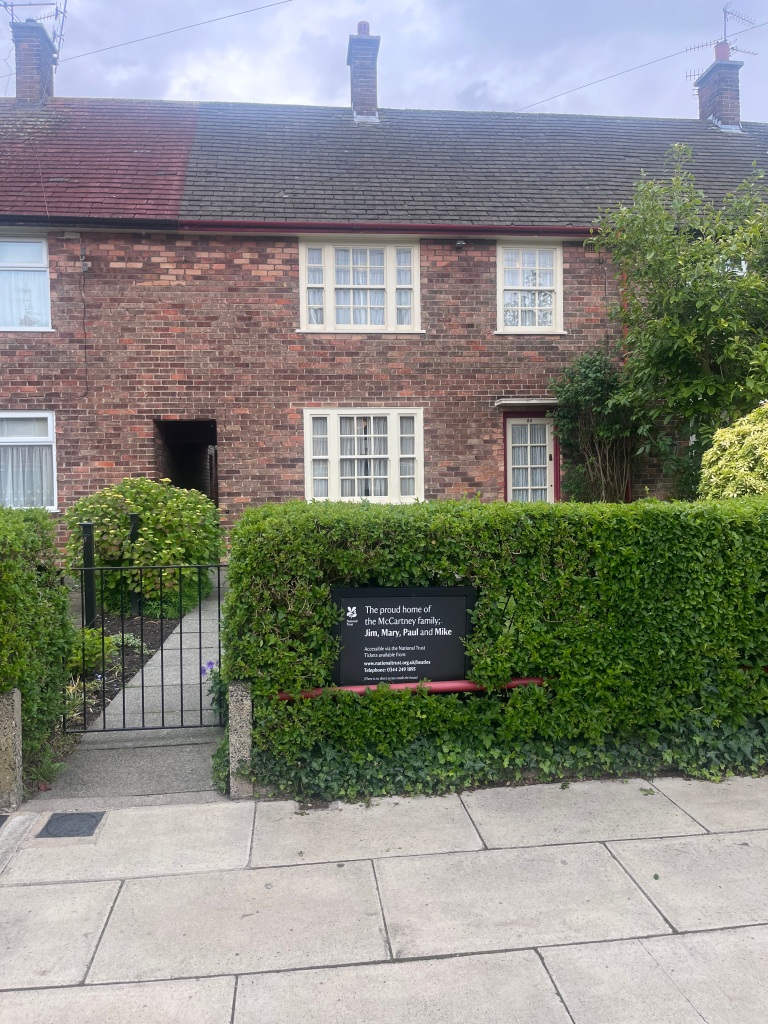
Next, we visited the house of John Lennon, which too is supported by the National Trust. Lennon’s house is on a bus road, so anyone parking up, make sure you do it safely without obstructing anyone! As shown in the photo below, there appeared to be some construction going on near John’s house, but we weren’t able to figure out what was going on with it. John’s childhood home has such a big garden and you can even see it from standing at the front door. The black gates, the lovely purple flowers, and the spaciousness of the exterior brings such an air of comfort, despite John’s childhood struggles, he had such a beautiful home growing up! Yoko purchased the house after John died and donated it to the National Trust, where, like Paul’s house, you can visit the interior and explore the house as if it’s like a museum.
John was raised by his Aunt Mimi and Uncle George in this semi-detached house. Mimi was a positive reinforcement in John’s early life, providing him with a structured live, which was different from his life with Lennon’s mother, Julia, where they experienced struggles and high levels of turbulence. This home for him was where John learned banjo, and later the guitar.
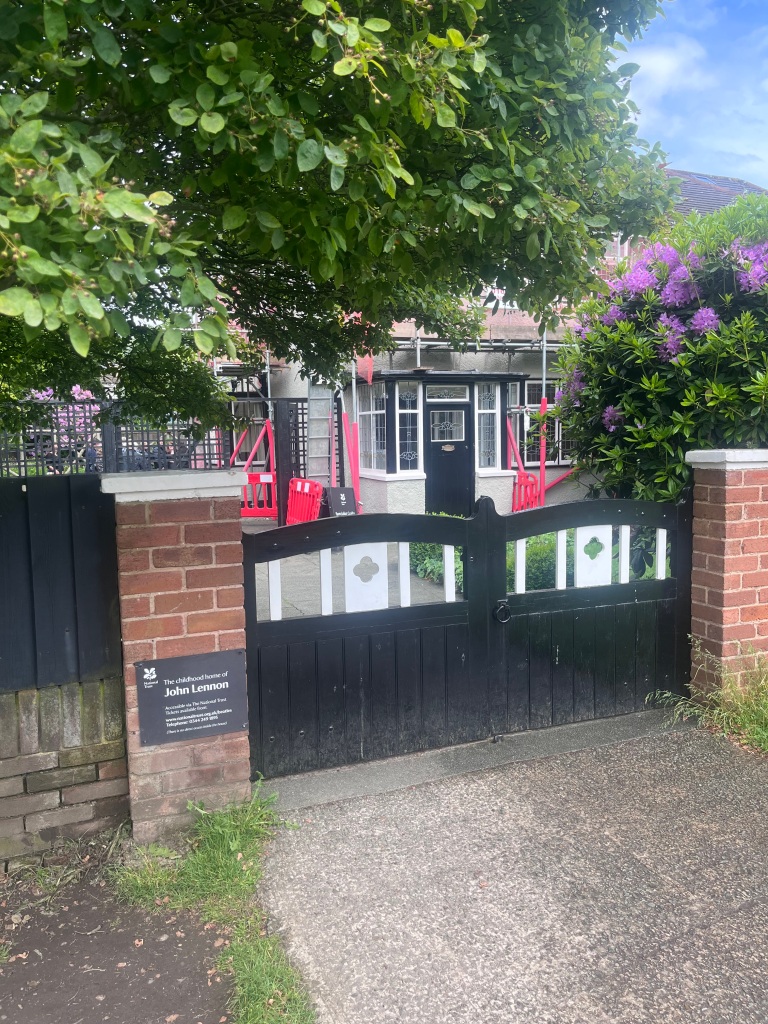
Finally, we drove to the house of Ringo, which honestly looked a little abandoned at first. The streets weren’t very well looked after; rubbish on the floor, a mattress tossed outside, and a spare broken toilet on someones doorstep. Despite this, Ringo’s childhood home looked very petite and bright, with a 1950s theme and style. Ringo’s neighbourhood were very close and tightly-knit, and you can really see that in the location itself. However, Ringo suffered from severe illnesses as a child, and he would’ve spent a lot of time away from home in hospitals. Despite these circumstances, Ringo’s passion for drumming was found in this very home.
As you drive towards Ringo’s street, you can see a huge brightly coloured mural (as seen in the photo below Ringo’s childhood home), which was absolutely fantastically crafted. It really embodies Ringo’s aura and personality, with the ‘peace and love’ message emulating in the art.


The Beatles’ homes provide a tangible connection to where everything started. The environments which nurtured the four enabled a cultural and historical change as we know today.
We were also able to visit some other iconic Beatles locations whilst on this journey, such as Strawberry Field and Penny Lane. You are also able to see these destinations on the Magical Mystery Bus.
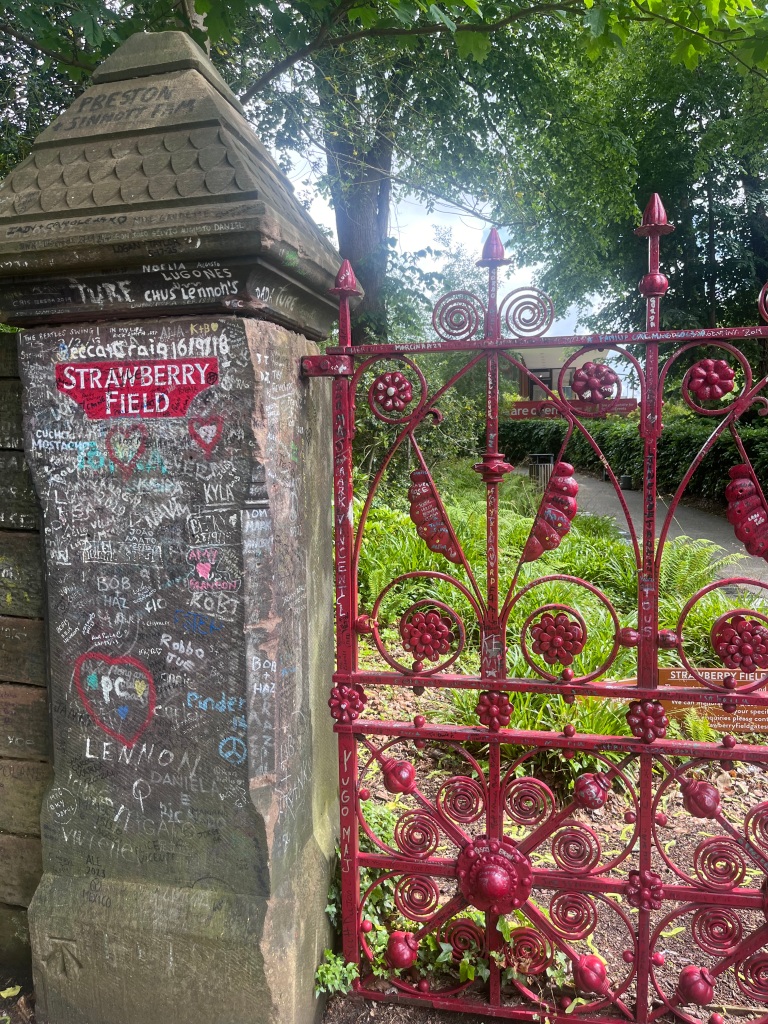

DISCLAIMER: I am not affiliated with the Magical Mystery Tour bus experience, however I encourage those who can’t travel by car, or who just want to have an immersive Beatles day out, to attend this experience.
Let me know in the comments what you think of The Beatles’ childhood homes and how modern day artefacts/ locations are so important in the celebration of the history of The Beatles.
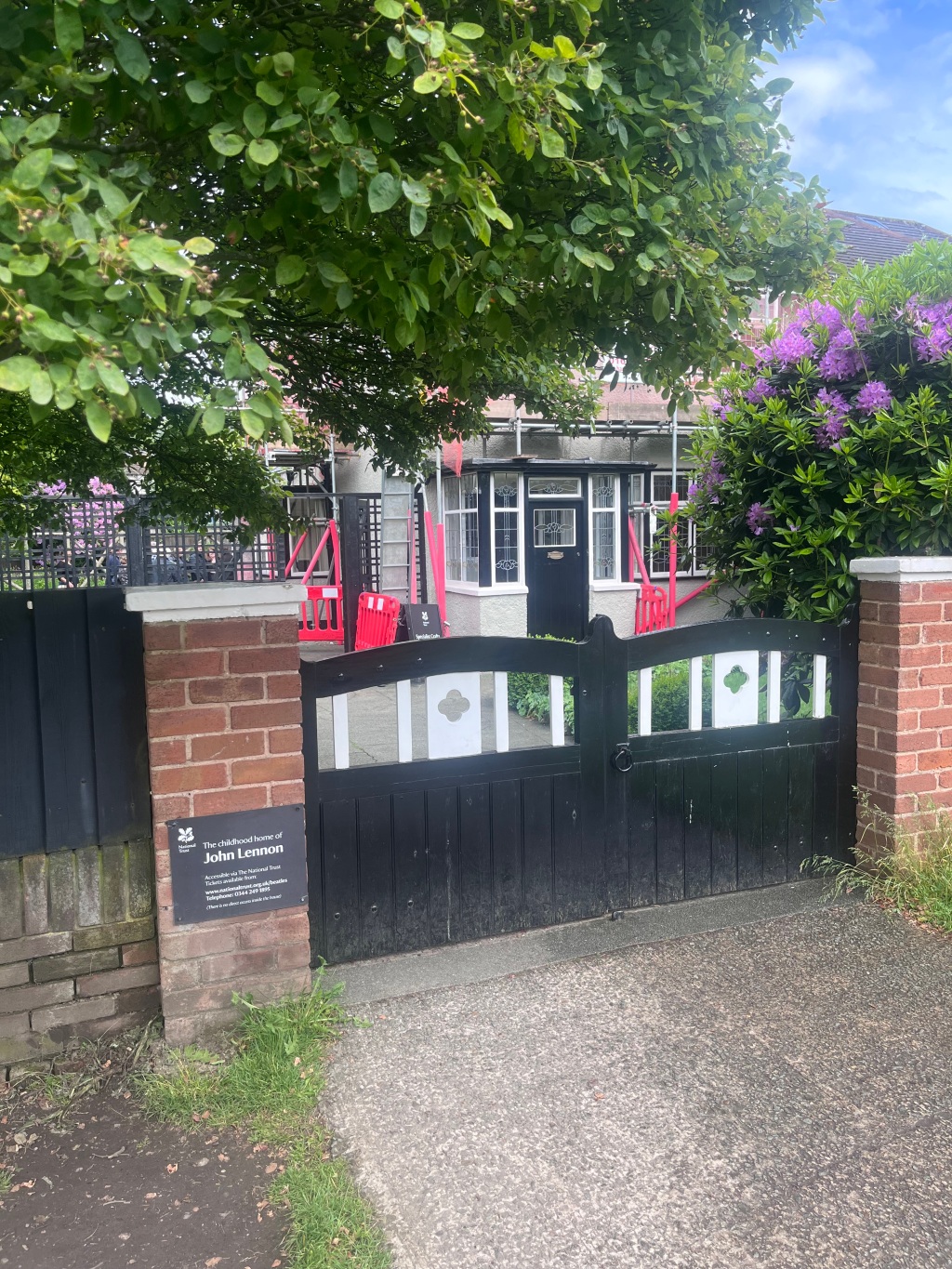
Leave a comment